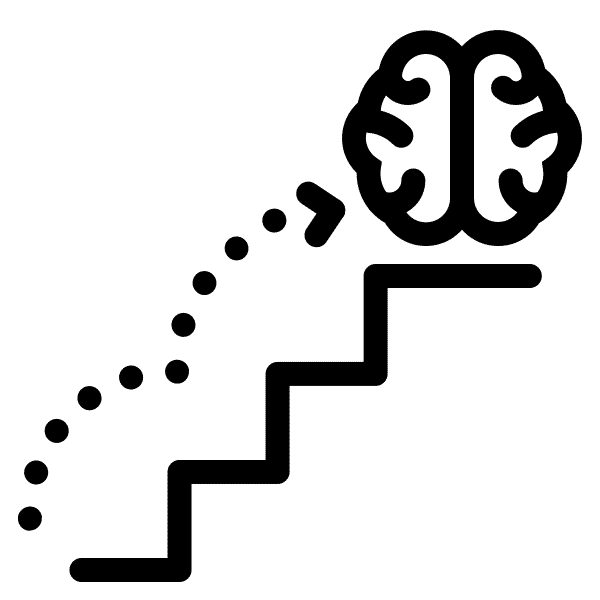Porn Addiction
Content Overview
Porn addiction refers to a neurological and emotional dependence on pornography that interferes with daily life, relationships, and the ability to function. A person may become dissatisfied with their own sex life or engage in risky behaviors, such as using porn at work or seeking out real-life affairs.
What is Addiction?
An addiction is more than just an intense interest in something.
It is a medical condition that changes the brain and the body and causes the person to feel compelled to continue using a substance or partaking in an activity, even when doing so may cause harm.
Most addiction research suggests that it activates regions in the brain associated with motivation and reward. Specifically, addiction alters the body’s dopamine system.
When a person with addiction initially uses the substance or engages in the behavior, they receive an intense rush of dopamine, causing feelings of pleasure and reward. Over time, their body may produce less dopamine and rely on increasing amounts of the substance or behavior to feel the dopamine rush.
Sex can be a highly rewarding behavior in terms of dopamine. Studies show that using pornography may also activate and change the functioning of the dopamine system, potentially leading to addiction.
Addiction affects other aspects of the brain as well, steadily changing it and making it increasingly difficult for the person to avoid the addictive substance or behavior.
Signs of Pornography Addiction
Porn addiction is the primary way that sex addiction manifests itself. Sex addiction is clinically known as Compulsive Sexual Behavior Disorder (CBSD), as indicated in the International Classification of Diseases – 11th Edition (ICD-11). The ICD is a classification system put out by the World Health Organization.
Most healthcare professionals and counselors are not educated on the neurological consequences of pornography consumption. Science shows that exposure to porn at an early age and subsequent continual use change the way a person’s brain performs. Essentially, the reward center becomes desensitized, causing arousal dysfunction, and the frontal lobe experiences decreased activity, impacting focus and anxiety.
Moreover, the impact of neurological addiction can touch every aspect of a porn user’s life, including their mental health (anxiety, depression, general malaise, anger, and irritability) and physical health, mainly in the form of erectile dysfunction (ED) and delayed ejaculation (DE). Sexual arousal and performance anxiety can be impacted, too, along with decreased attraction to their partner, leading to relationship problems.
If you are new to the work of Dr. Trish Leigh, she has created over 800 free videos to help people overcome porn addiction. You can view her channel HERE. Dr. Leigh is on a mission to help those who are inspired to quit porn succeed.
Some indications that pornography may be causing a problem include:
- A person’s partnered sex life becomes less satisfying.
- Pornography causes relationship issues or makes a person feel less satisfied with their partner.
- Motivation and focus decrease while anxiety and depression increase.
- A person engages in risky behavior to view pornography, such as doing so at work.
Some other signs that a person may be developing an unhealthy relationship with porn include:
- They ignore other responsibilities to view pornography.
- They view progressively more extreme pornography to get the same release that less extreme porn once offered.
- They feel frustrated or ashamed after viewing porn but continue to do so.
- They want to stop using pornography but feel unable to do so.
- They spend large sums of time, and or money on pornography, possibly at the expense of daily or family responsibilities.
- They use pornography to cope with sadness, anxiety, insomnia, or other mental health issues.

Top 12 Warning Signs of Porn Addiction
Some of the most common signs and symptoms of porn addiction are:
People displaying this compulsive sexual behavior may try (and fail) to reduce their use of porn, even despite negative consequences and feelings of guilt. Men ask Dr. Trish Leigh, a leading sex addiction recovery professional, “How do I know if I am addicted to porn?” Her response is always, “Try to stop watching and see what happens.” Quitting porn can be very difficult due to doapmine dependency.
Because watching porn can produce dopamine (the brain’s pleasure chemical), a person may experience cravings to continue watching porn.
Urges are unique because they occur as part of addiction and as a withdrawal symptom during porn abstinence. When quitting porn, intense urges can lead a person back quickly if they do not have the proper tools to succeed.
When someone has an addiction, they often prioritize it over other activities.
Someone with a porn addiction may choose to watch porn instead of:
- Going to work or school
- Spending time with family members or loved ones
- Fulfilling daily responsibilities
- Participating in previously enjoyable hobbies
- Often, prioritizing porn hurts the person with the porn addiction and those around them.
For someone with porn addiction, their porn viewing habits may begin casually, but over time, they may find themselves watching porn more frequently, for extended periods, and more intense scenarios and scenes.
In addition to the time spent viewing porn, they may also view it during inappropriate situations, such as at a family gathering, in the car pickup line at school, or at work.
While the internet and social media have made it easy to access porn at no cost, many internet porn sites with subscription services are also available.
Someone with a porn addiction may spend significant amounts of money on pornographic content. In some cases, they may even spend money they don’t have or money that was supposed to go toward paying bills, leading to financial problems.
Many people who have developed porn addiction spend tens of thousands of dollars on camgirl models. In these situations, due to brain dysfunction, the addict believes they are developing a real sexual relationship.
Their porn addiction may also lead to problems at work, including loss of employment, which can cause additional financial strain.
Porn presents a mostly unrealistic depiction of sexual dynamics. People with porn addiction may compare their sex life to what they see in porn and feel let down.
Over time, they may find porn more exciting or sexually arousing than healthy sex or even prefer viewing porn over being intimate with their partner.
Ironically, they will also become bored with the individual porn performers that they were originally excited by and seek new, more stimulating variations.
As a person’s porn addiction continues to get more severe, they may reach a point where they experience sexual arousal dysfunction (SAD) without the use of pornography.
Eventually, the person may become so dependent on the elevated dopamine from watching porn that they need to view porn to feel pleasure or arousal.
This means that healthy sexual activity is not stimulating enough to initiate a sexual encounter without a quick viewing of something porn related to get them started. This perpetuates the porn addiction due to erectile dysfunction and sexaul performance anxiety.
Porn’s depiction of sexuality is often unrealistic. Someone with a porn addiction may see how these actors behave and expect their partner to act the same way during sexual activity.
Since many of the actions depicted in porn do not match up with real life, it may lead to disappointment and frustration for the porn addict.
It may also cause issues with self-esteem due to the unrealistic image portrayed on screen. Many men have reported self-esteem issues due to an unreasonable comparison to penis size and expectations of their partner’s response to them.
Fantasy is not reality. With consistent viewing of sexual unreality linked to high levels of dopamine, it can ruin reality. Essentially, all of the dopamine is in the screen, none of it is linked to life. Anxiety, depression, and mental health issues can ensue.
As someone’s porn viewing habits become obsessive, they may find it difficult to focus on anything unrelated to their porn habit.
Their obsession with porn and its effect on their ability to concentrate may lead to frustration, confusion, and agitation. They may also start having problems at work or other aspects of their lives.
Anger and agitation are common side effects of addiction, especially when someone is craving a hit of dopamine and they are forced to wait. Engaging in reality can become increasingly difficult due to the dopamine deficit state and increase in cortisol the stress hormone. This is due to the resulting autonomic nervous system dysfunction that results from porn addiction.
With porn addiction specifically, the person may grow angry or frustrated when something or someone is keeping them from being able to watch porn, such as work or spending time with their partner.
Using pornography as an outlet to deal with negative emotions can be risky.
Like drug or alcohol abuse, sometimes a person may use a substance or behavior to avoid dealing with stress and other unpleasant feelings.
Over time, they may become reliant on pornography as an unhealthy coping mechanism and a means to escape their problems.
What The Research Says About Porn Addiction
A 2023 study recognizes “the increasing internet pornography addiction as a potential problem of epidemic scale and shows that society may expect severe consequences of Internet pornography exposure to our current young adult population and increasing addiction in the future, approximately 10 to 30 years from now. The current generation, which is most highly affected by pornography consumption, will experience physical health issues such as erectile dysfunction and body image dissatisfaction in middle age or later, which may influence future epidemics of mental disorders, including depression and anxiety, as well as increased suicidal tendencies.”
A 2019 study of males who sought treatment for problematic pornography use (PPU) found changes in the participants’ brains that were consistent with addiction. The researchers found that the brains of the men with PPU reacted differently to erotic images—or the anticipation of them—than the brains of men without PPU.
The use of pornography may also affect people’s relationships. For example, some research indicates that pornography creates unrealistic expectations of sex.
A 2013 study found that among heterosexual male participants in couples, the use of pornography was associated with less sexual satisfaction.
Accessing pornography is easy, and it can require significantly less effort than interacting with a partner while offering higher levels of arousal. Porn use is referred to as the “Triple AAA’s” because it is accessible, affordable, and anonymous. Pornography use can also contribute to or cause erectile dysfunction. For some, this can contribute to an unhealthy cycle in which porn causes problems in a relationship, leading the person to rely even more heavily on pornography to achieve sexual satisfaction and escape the relationship.
Truth About Porn, a nonprofit organization, has been compiling research on the impact of pornography consumption on brain performance, mental and physical health, relationships, and more. Increasing evidence of sex and pornography addiction being harmful continues to be exposed as more scientific studies are being undertaken to explore porn’s impact.

Causes of Pornography Addiction
Pornography is considered a supernormal stimulus, meaning that it highly activates the reward center in the brain when viewed.
Most people find porn when they are young, during adolescence.
The young brain is not yet developed, and when it is exposed to a supernormal stimulus at a young age, it changes its performance pattern to require higher levels of dopamine to feel good. Ultimately, it needs dopamine to not feel bad as use progresses toward addiction over time. Simultaneously, the brain is linked to screen-based sexual media for that high dopamine rush. This coupling drives the user back for more and more over time.
Additionally, a 2015 Study found that believing oneself to be addicted to pornography was a more significant cause of associated distress. It can be very difficult to cope when you realize you are dependent on porn.
Experts agree that like other behavioral addictions, compulsive porn use is a complex issue with a range of possible causes. Some of these causes may include:
- Underlying neurological dysfunction related to trauma, anxiety, depression, and more.
- Mental health conditions: A person might use pornography to escape psychological distress.
- Intimacy Issues: Pornography can be an outlet for struggles with intimacy.
- Biological causes: Certain biological factors, including changes in brain chemistry when a person views porn, may increase the risk of addiction.

Identifying Porn Addiction in the Brain
With advances in technology, brain scans can identify the underlying neurological issues that contribute to pornography addiction.
Most doctors and therapists do not know that pornography in and of itself is highly problematic due to its addictive nature. Essentially, the brain is stuck in a cycle of hypo- and hyperarousal and is linked to excessive dopamine from porn consumption to help the person feel better.
Highly trained neurological professionals, like Dr. Trish Leigh, are trained in a state-of-the-art brain scan technique called a quantitative electroencephalogram (qEEG). The qEEG Brain Map can identify and visualize the impact of porn use within the user’s brain. This brain pattern is one of excessive use of extra fast brain processing speed that causes anxiety coupled with extra slowness that results in fatigue and overwhelm. Dr. Leigh calls this pattern, “Strained Brain”. It leads a person to have urges to self-soothe and self-stimulate. This pattern continues to be reinforced every time a person watches porn. This dysfunctional brain pattern can be visualized on a qEEG Bran Map. If a person continues reinforcing the pattern of Strained Brain the dyfunciton can progress into being stuck in an artificially induced numb state termed “Drain Brain” by Dr. Trish Leigh.
Strained Brain Dysfunctional Brain Pattern


Porn Addiction Treatment
Treatment for pornography addiction is multi-faceted.
Dr. Trish Leigh has combined scientifically proven strategies into one comprehensive program that includes: neurological brain training, cognitive behavioral techniques, mindfulness, positive psychology, and integration theory. This program helps you address past dysfunction that led to porn use, current habits and lifestyles that contribute to its perpetuation, and future intentions to heal from porn use. The Porn Free Brain Forever Program, developed by Dr. Trish Leigh, is designed to be moved through over 90 days for the greatest success. However, the program can be self-paced, allowing the user to engage in the lessons as deeply as desired.

Porn Addiction Treatment Srategies May Involve:
State-of-the-art Neurofeedback Brain Training
Neurofeedback, or EEG biofeedback, is a non-invasive Neurotherapy which helps you train your brain so you can enhance your brain health and improve your performance. It’s kind of like exercise, but for your brain!
Cognitive Behavioral Techniques
This can help a person understand their relationship with porn, identify unmet sexual needs, and develop strategies for dealing with psychological distress.
Relationship Coaching
Couples’ counseling can help partners talk about their values, determine whether porn has a place in their relationship, and cultivate deeper trust.
Lifestyle Changes
Some people use pornography out of boredom or exhaustion. A more healthful lifestyle may involve spending fewer hours on the computer.
Mindfulness
Awareness of your thoughts and feelings in the present moment improves decision making and implementation of brain-based strategies and action steps. Specific techniques for resetting the brain, using easy and flexible meditation techniques, can help improve baseline brain performance and feelings of stress, anxiety, boredom, and overwhelm.
Positive Psychology
Cultivating and creating new, positive thought processes to inform new choices and behaviors contributes to the efficacy of our approach. Discovering and creating calm, focused joy in your life helps to sustain a new, better brain performance pattern for lasting change.
WHEN TO SEE A DOCTOR OR COACH?

A person should see a doctor if:
- They have trouble orgasm from sex with a partner.
- They experience an increase in sexual dysfunction, such as trouble maintaining an erection before sex.
- Sex becomes painful.
- They experience or have experienced other addictions.
- They experience symptoms of anxiety, depression, insomnia, or other mental health conditions.
- Pornography causes relationship problems.
- A person feels guilty about their pornography use.
- A person wants to cut down on their pornography use but feels unable to do so.
Professionals hold varying views and knowledge levels on pornography — some may understand that pornography use is harmful, while others may think that it is never addictive, even further some endorse the use of porn and masturbation. It is important to work with a non-judgmental professional who is educated in the highly specific nuances of porn addiction. Dr. Trish Leigh works with individuals all over the world and can help identify the underlying neurological dysfunction that contributes to porn addiction as well as mental and behavioral factors that are at play.

Summary
Viewing pornography excessively can cause serious problems. Due to dopamine dependency and autonomic nervous system (ANS) dysfunction, porn can become highly addictive and difficult to stop watching. To learn more about Porn Free Brain Forever: The Complete Essential Guide to Recover from Porn Addiction, visit the page HERE.

